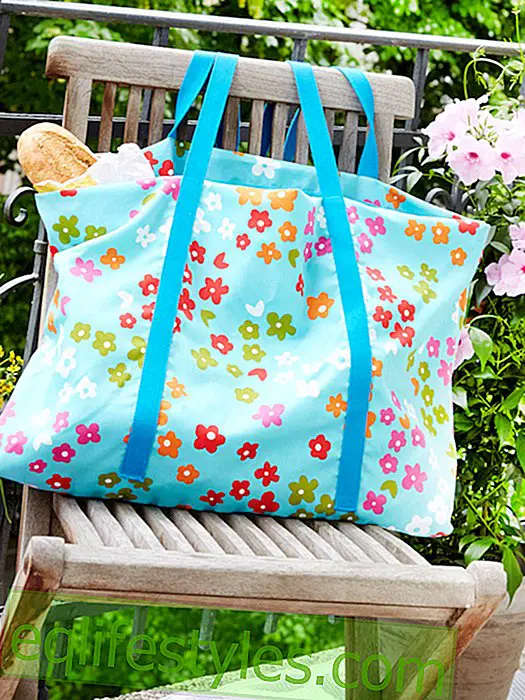
Photo: Rolf Benz
The natural material is in high demand
Leather does not have to adjust: sometimes the natural material is smooth and supple, then it shows its rough, wild side. Since time immemorial, people have tanned animal skin.
It is attractive: leather. No one standing in front of a beautiful leather sofa in a furniture store will be able to resist the temptation of sliding his hand over the surface. Firm, smooth and supple, it almost invites to touch. The typical leather scent caresses the nose, while the eyes scour the natural material for small irregularities. No question: leather appeals to the senses. At the same time it is incredibly versatile and changeable. While the tanned animal skins in the living area are considered to be particularly classy, timeless and elegant, they stand for something completely different in their clothing: the black leather jackets of rockers, for instance, symbolize rebellion and nonconformity, while traditional lederhosen jackets and pants contrast with tradition and conservative values.
How does leather really turn into skins? Details can be found in Materials Science.

In addition to stone, wood and wool, leather is considered one of the oldest materials used by mankind. Even the primitive man should have warmed and protected himself with the skins and skins of killed animals. Archaeologists found tools that suggest that the beginnings of tanning are in the Stone Age . Because the skins rotting quickly left untreated, a method had to be found to preserve them. Smoke, fats or extracts from tree bark were the first known tanning agents. Excavations in Egypt brought to light a 5, 000-year-old tannery workshop, including leather and skin pieces. And the sarcophagus of a wealthy Egyptian, dated between 2850 and 2700 BC, is decorated with scenes of tanning at work.
At the time of the Roman Empire, new, better ways to conserve leather were developed: it was used for everyday items and the equipment of legionnaires, who wore sandals and leather caps. The world traveler Marco Polo (circa 1254 - 1324) told of a Chinese prince who wore gold-plated leather clothes and was carried in a leather-covered litter.
In the Middle Ages, the tannery became a craft profession. However, the trade was considered disreputable, and in the original sense of the word: Since developed in the processing of decaying skins an unbearable stench, tanneries were often banned from the city gates.

Patrick Süskind's bestseller "Das Parfum" gives an impression of how immensely painstaking the work of the tanners was. Grenouille, the murderous protagonist of the book, is sold to a tannery as a small boy. He "dissected the bestial stinking skins, watered, dehaired, dehaired, etched, rolled them, smeared them with stain, split wood, debarked birch and yew trees, climbed down into the pits filled with biting haze, layered (...) skins and barks on top of each other, scattered crushed galls, covered the horrible pyre with branches of ivy and soil. Years later, he had to dig it out again and get the tanned leather mummified skin corpses out of their grave. "
Until the middle of the 19th century, mainly vegetable raw materials were used in the manner described above. Only when in 1858 the tanning effect of the acidic mineral chromium salt was discovered, the industrial mass production of leather could begin. The raw material has not been cheap since then - but its production is still too expensive for that - but it became affordable for more and more people. And he seems almost usable everywhere. Leather shoes and jackets are a matter of course today, as are bags, belts, gloves and many other accessories. A good football is of course made of leather, just like saddles and harnesses.

Even in the living area, the offer is by no means limited to sofas and armchairs. Chairs and loungers are increasingly being replaced by seats made of sturdy material, stools are supplied, picture frames, boxes and magazine racks are finished, and there are even cushions and bed covers made of soft suede . Only the magnificently hand-painted and gilded leather wallpaper, which adorned the walls of palaces and houses of rich merchant families until the 18th century, can today only be admired in the museum. Tip: Visit the Leather Museum: www.ledermuseum.de.
Even though new, more easy-care plastics and materials are being developed, leather seems to remain irreplaceable. Maybe its individuality is the reason: every animal, every skin is different and shows very unique features that make every leather furniture an expressive one-off piece.
Trend researchers also found that in times of economic crisis people tend to retire to their own four walls to make themselves comfortable there. Sociologists call this phenomenon, " homing ", a phenomenon that the furniture industry could benefit from. Instead of cars or travel, many prefer to afford a beautiful piece of furniture such as a leather sofa, which accompanies them for a lifetime.









